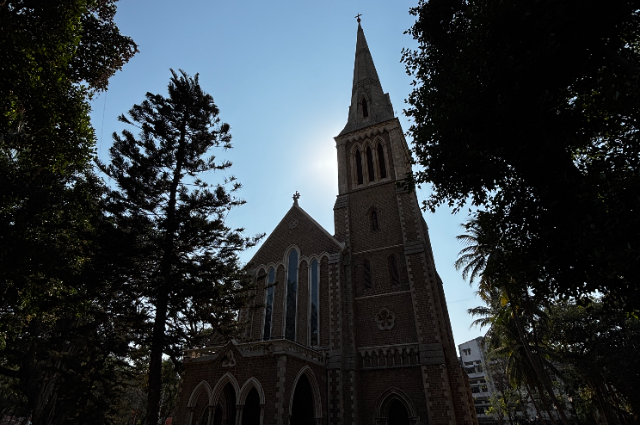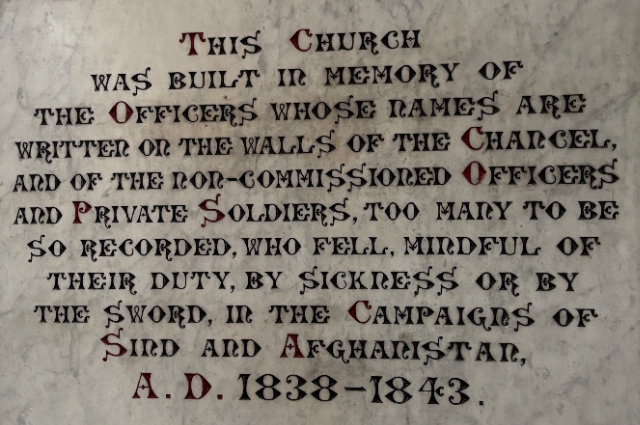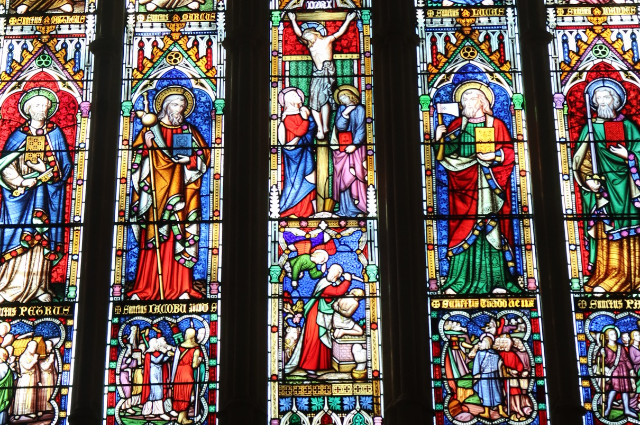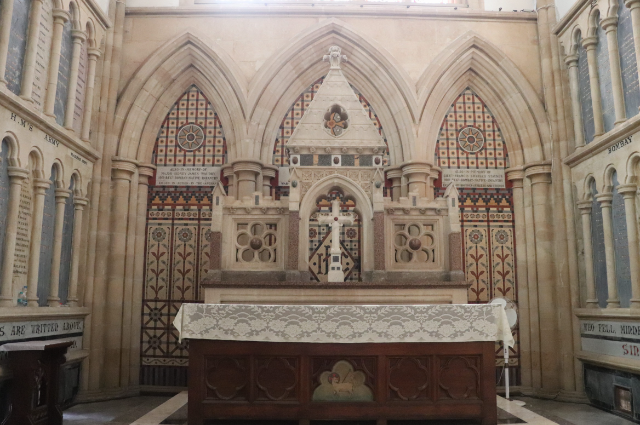
Amid the bustling streets of Mumbai, where modernity meets tradition, stands a solemn sentinel of history - the Afghan Church. More than just a place of worship, it is a shrine of remembrance, echoing the voices of soldiers who never returned home. As the golden morning light filters through its stained-glass windows, one can almost feel the silent prayers and whispered stories of sacrifice within its walls.
The Afghan Church, also known as the Church of St. John the Evangelist, is one of Mumbai’s most iconic and historically significant churches.
Nestled in the heart of Colaba, this magnificent structure is not only a place of worship but also a monument commemorating the lives of British and Indian soldiers who fought in the First Anglo-Afghan War (1839–1842). The Afghan Church is renowned for its Neo-Gothic architecture, intricate stained glass windows, and its role in Mumbai’s colonial past.
A Legacy Born from Tragedy

The origins of the Afghan Church trace back to the tragic events of the First Anglo-Afghan War, in which British and Indian soldiers suffered a devastating defeat at the hands of Afghan forces. The campaign, which aimed to establish British control over Afghanistan and counter Russian influence in Central Asia, ended in disaster. Of the 16,000 British troops and Indian sepoys who retreated from Kabul, only one survivor, Dr. William Brydon, reached safety in Jalalabad.
The loss of these soldiers deeply affected the British community in India. To honour their memory, the British government decided to construct a church as a lasting tribute to those who had perished. Thus, the foundation stone of the Afghan Church was laid in 1847, and the construction was completed in 1858.
Architectural Marvel!
Designed by Henry Conybeare, an engineer in the British East India Company, the Afghan Church is a fine example of Neo-Gothic architecture. The structure was built using locally available buff-coloured basalt and limestone, giving it a unique yet classic appearance.
Some of the most notable architectural features of the church include:
- Tower and Spire
One of the defining features of the Afghan Church is its steep, towering spire, which rises to a height of 198 feet (60 meters). It was designed to serve as a landmark for ships arriving at the Mumbai harbour. The spire, along with pointed Gothic arches and ribbed vaults, is a signature of Victorian-era churches.
- Stained Glass Windows

The church’s stained glass windows are among the most stunning in Mumbai. They were crafted in England and shipped to India, adding to the church’s magnificence. These windows depict various biblical scenes and figures, enhancing the spiritual ambience of the church.
- Memorial
Inside the church, one can find a memorial slab engraved with the names of British and Indian soldiers who lost their lives in the First Anglo-Afghan War. These memorials serve as a poignant reminder of the sacrifices made by these soldiers.
- Wooden Interiors and Carvings
The Afghan Church also boasts exquisite wooden interiors, with pews, pulpits, and panels made of teakwood. The intricate carvings on the wooden panels reflect the craftsmanship of the period.
- Roof and Flooring
The roof is supported by hammer-beam trusses, a distinct feature of Gothic architecture. The Minton tile flooring, imported from England, further adds to the church’s elegance.
Religious and Cultural Significance
Although originally built as a memorial, the Afghan Church remains an active place of worship for Mumbai’s Anglican Christian community. Services are held regularly, attracting both locals and tourists. The church has also been recognized as a heritage structure and is protected under Mumbai’s heritage conservation regulations.
The church is a significant historical and architectural landmark, drawing history enthusiasts, architects, and photographers alike. Its serene surroundings and spiritual ambience make it a peaceful retreat amid Mumbai’s bustling cityscape.
Challenges and Restoration Efforts

Despite its grandeur, the Afghan Church has faced challenges over the years. Mumbai’s humid climate and air pollution have contributed to the deterioration of its structure, particularly the stained glass windows and stone walls. Recognizing its importance, several restoration efforts have been undertaken by conservationists and heritage activists. These efforts aim to preserve the church’s historical, architectural, and spiritual significance for future generations.
As one stands before the Afghan Church, gazing up at its towering spire, it is impossible not to feel a sense of respect. It is more than just an architectural wonder; it is a bridge between the past and the present, a silent storyteller of lives lost and battles fought. The Afghan Church stands as a momentous tribute to the sacrifices of soldiers who fought in the First Anglo-Afghan War while also being an outstanding example of Gothic Revival architecture. It is a symbol of Mumbai’s colonial past and remains an integral part of the city’s historical and cultural heritage. Whether one visits for spiritual solace, historical exploration, or architectural appreciation, the Afghan Church remains a site of profound significance in the heart of Mumbai.
. . .
Citations:
